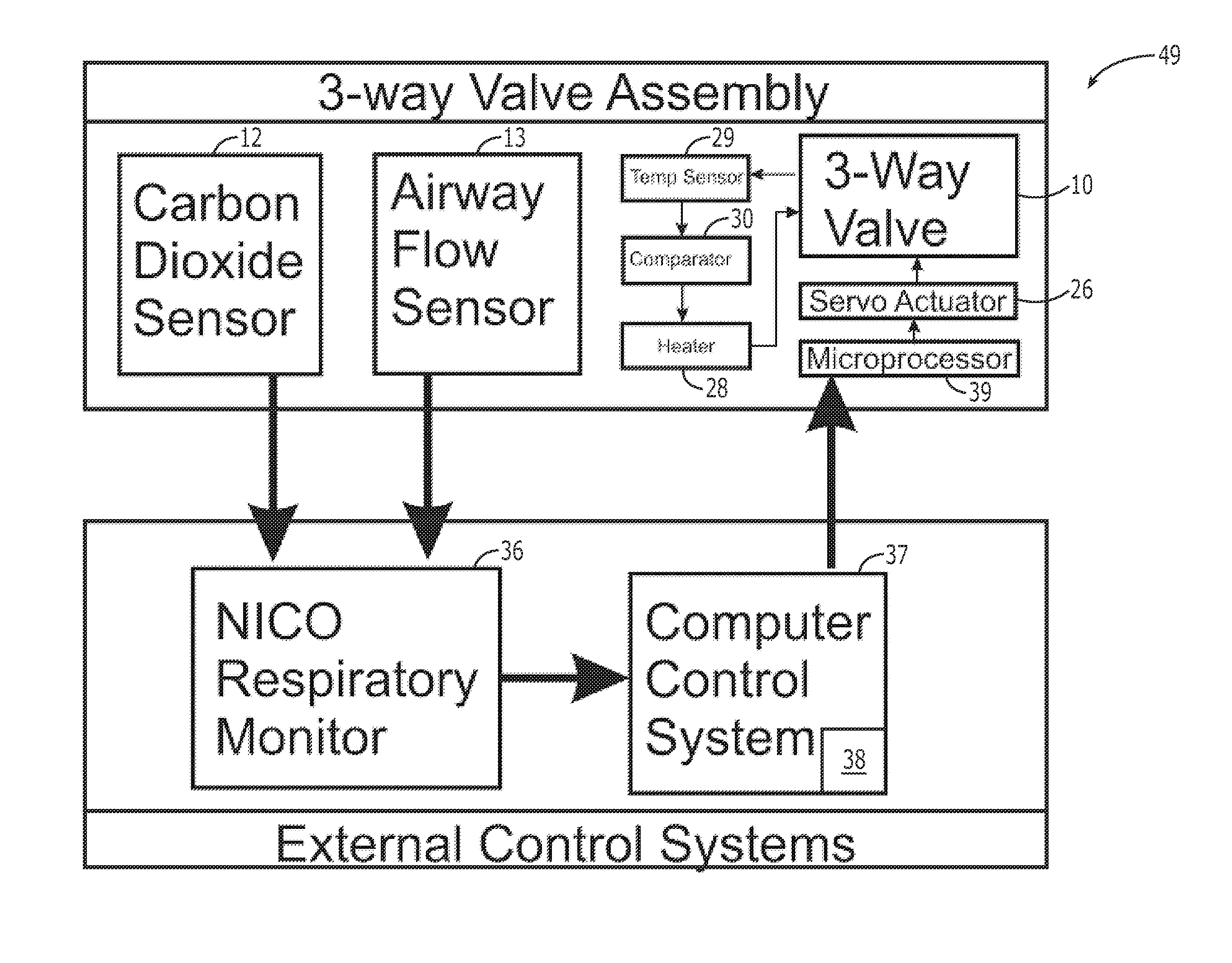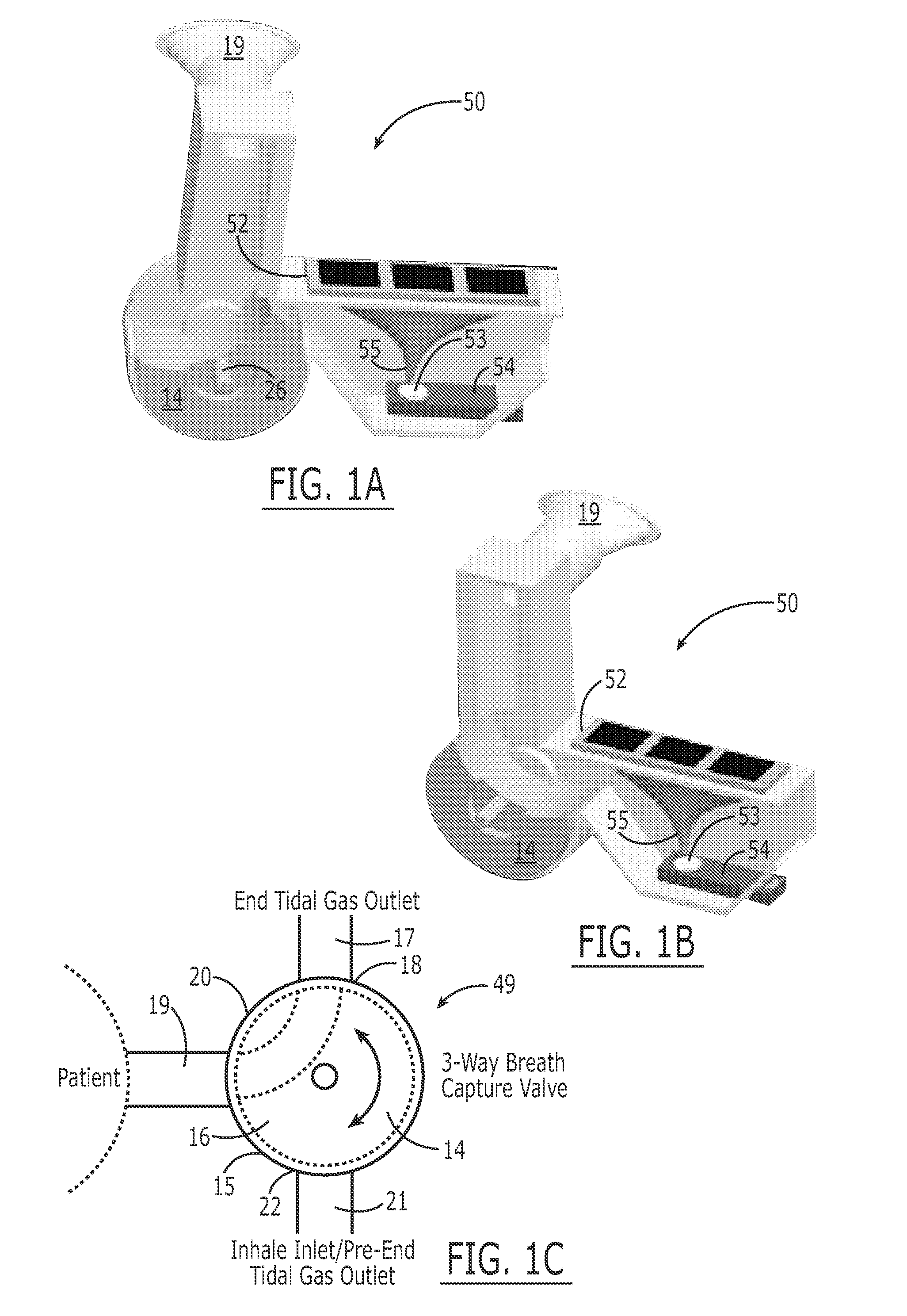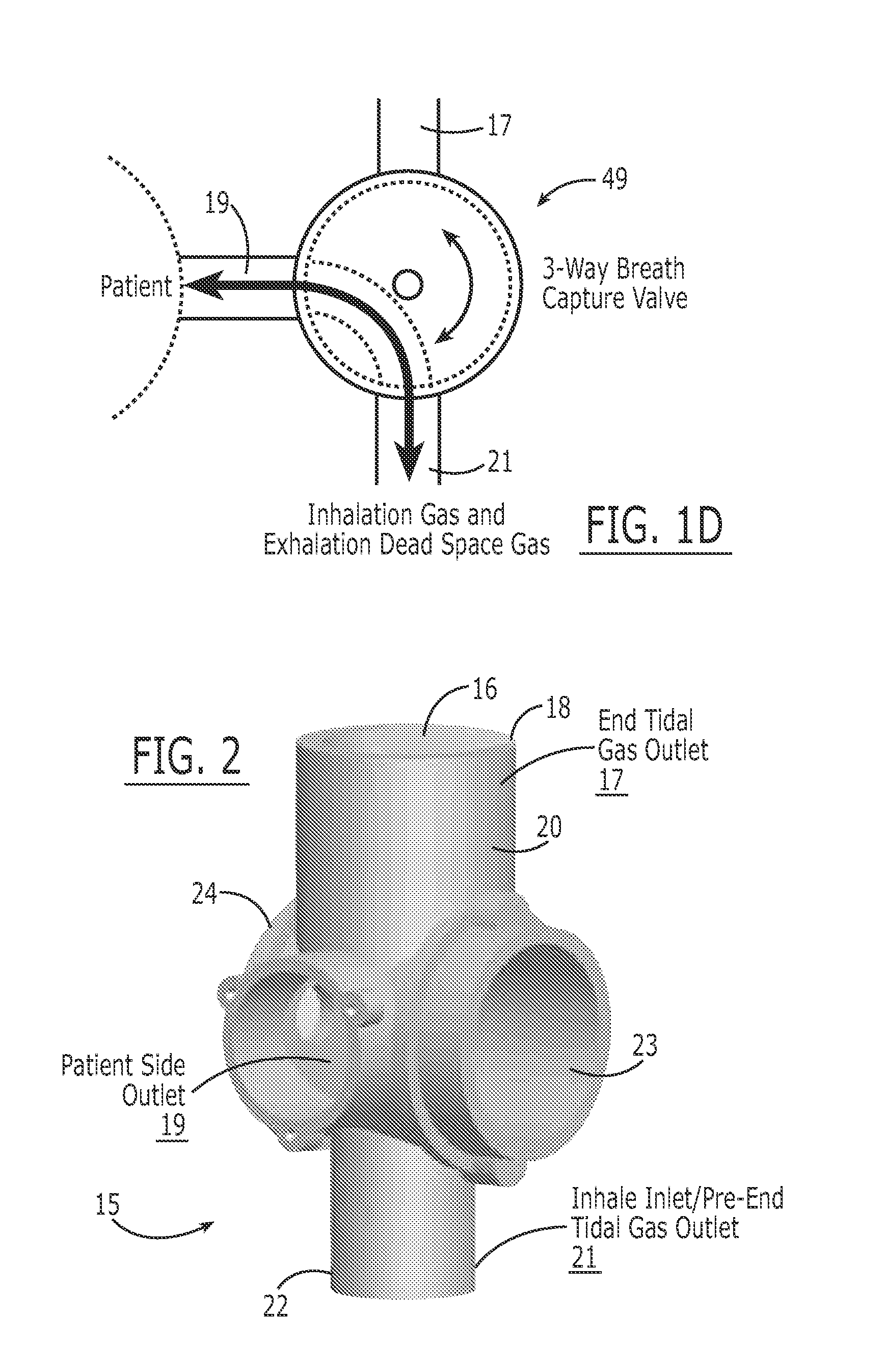Breath and breath condensate analysis system and associated methods
a breath condensate and analysis system technology, applied in the field of breath condensate analysis systems and methods, can solve the problems of discomfort for patients, time-consuming and expensive breath test methods, and analytical methods that require a trained technician and laboratory, and achieves convenient and fast analysis, simple use, and high volume studies and/or clinical use.
- Summary
- Abstract
- Description
- Claims
- Application Information
AI Technical Summary
Benefits of technology
Problems solved by technology
Method used
Image
Examples
Embodiment Construction
[0043]A description of the preferred embodiments of the present invention will now be presented with reference to FIGS. 1A-22.
[0044]In a preferred embodiment of the invention, a system 10 for analyzing breath, breath aerosols, and breath condensate comprises a collection and analysis device 50 that is preferably disposable and is usable with a complementary electrical instrument housing 51, which may be non-disposable. The system 10 achieves automated extraction of condensate fluid from exhaled deep lung gas and immediate analysis by a miniaturized sensing system, such as that which may be implemented on a microfluidic device. The system 10 includes features for improved gas flow, condensate fluid extraction, and communication of the collected condensed fluid extract to the analysis system.
[0045]In the preferred embodiment of the invention, the automated provision of a drop of exhaled breath condensate to a miniaturized analysis device is accomplished by means of a Peltier cooler-ba...
PUM
 Login to View More
Login to View More Abstract
Description
Claims
Application Information
 Login to View More
Login to View More - R&D
- Intellectual Property
- Life Sciences
- Materials
- Tech Scout
- Unparalleled Data Quality
- Higher Quality Content
- 60% Fewer Hallucinations
Browse by: Latest US Patents, China's latest patents, Technical Efficacy Thesaurus, Application Domain, Technology Topic, Popular Technical Reports.
© 2025 PatSnap. All rights reserved.Legal|Privacy policy|Modern Slavery Act Transparency Statement|Sitemap|About US| Contact US: help@patsnap.com



